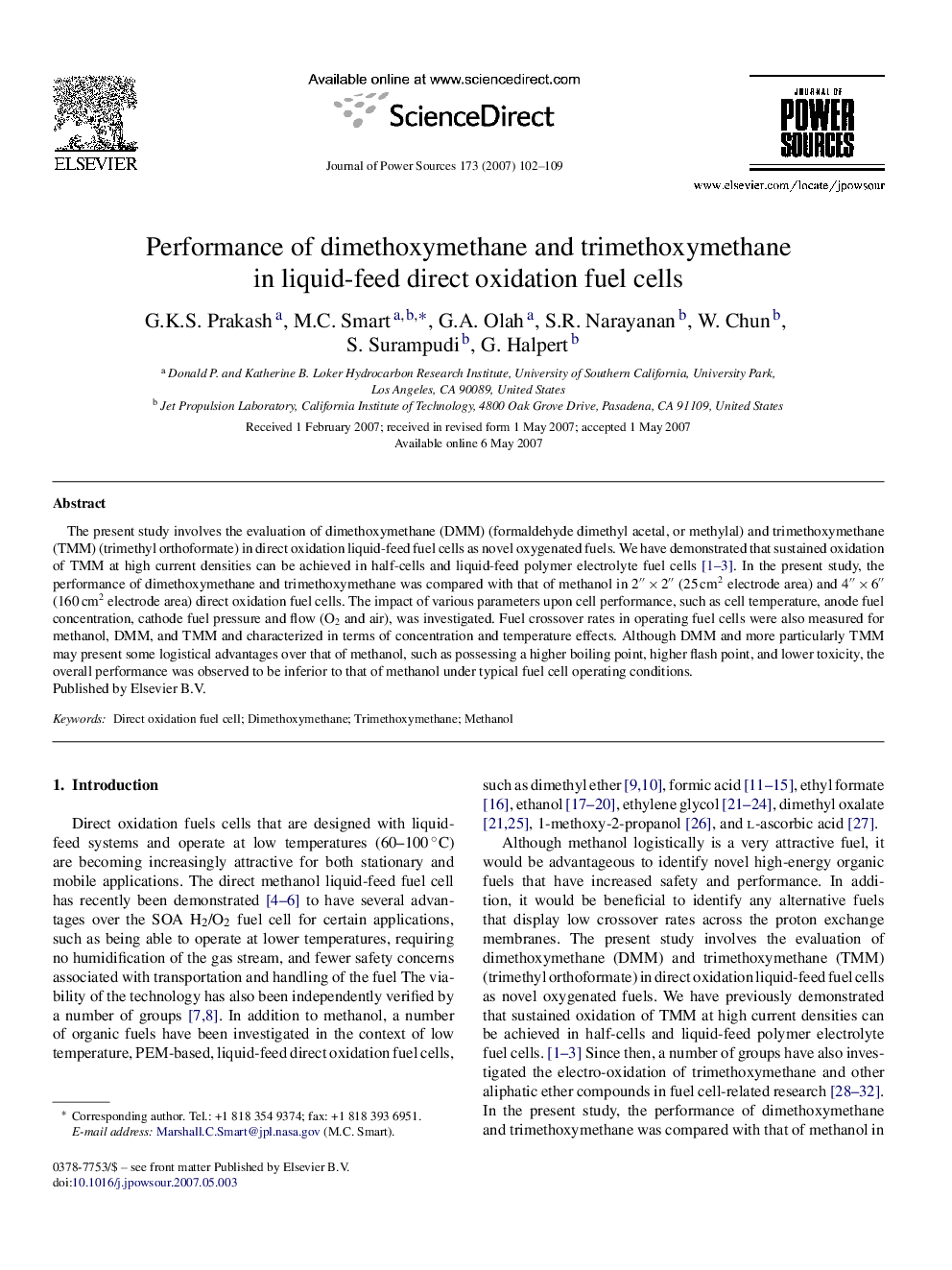| Article ID | Journal | Published Year | Pages | File Type |
|---|---|---|---|---|
| 1294874 | Journal of Power Sources | 2007 | 8 Pages |
The present study involves the evaluation of dimethoxymethane (DMM) (formaldehyde dimethyl acetal, or methylal) and trimethoxymethane (TMM) (trimethyl orthoformate) in direct oxidation liquid-feed fuel cells as novel oxygenated fuels. We have demonstrated that sustained oxidation of TMM at high current densities can be achieved in half-cells and liquid-feed polymer electrolyte fuel cells [1], [2] and [3]. In the present study, the performance of dimethoxymethane and trimethoxymethane was compared with that of methanol in 2″ × 2″ (25 cm2 electrode area) and 4″ × 6″ (160 cm2 electrode area) direct oxidation fuel cells. The impact of various parameters upon cell performance, such as cell temperature, anode fuel concentration, cathode fuel pressure and flow (O2 and air), was investigated. Fuel crossover rates in operating fuel cells were also measured for methanol, DMM, and TMM and characterized in terms of concentration and temperature effects. Although DMM and more particularly TMM may present some logistical advantages over that of methanol, such as possessing a higher boiling point, higher flash point, and lower toxicity, the overall performance was observed to be inferior to that of methanol under typical fuel cell operating conditions.
